Mary Fleming's Blog, page 2
March 16, 2024
Grey Matter

Friday, 15 March
We the People do not agree on much these days, but can anyone deny that the weather here in north-western Europe this last stretch of time has been terrible? I use the term stretch of time because it has felt too warm to say winter. Wherever I have been - Paris, London or the Perche - one grey, rainy day follows another with temperatures above the no-longer average and often in the face of a menacing wind. It's felt more like a state of mind than a season.
 A foggy day in London-town
A foggy day in London-townEven I, a precipitation groupie, a drought hater, have felt the weight of the sky. Getting soaked twice in one day and washing load upon load of dirty dog equipment (not to mention hosing down the dirty dog herself) can subvert the spirit of the rah-rah-rainiest of us.
 Will it ever end?
Will it ever end?Especially when it seems all too reflective of the wider mood.
 Zeitgeist
ZeitgeistYet looking through my photos over the last period, I note that the sun has come out from time to time between storms.
 A river should not run through it
A river should not run through itAnd often in rather spectacular, certainly uplifting, fashion.
 Le Louvre in a flattering light
Le Louvre in a flattering lightAccording to Hamlet: "There is nothing either or good or bad but thinking makes it so." I don't agree, but since there seems to be so little we can do about the great deal of bad that is going on in the world, let's shine some light on the good, nudge the cerebral grey matter as it were in a sunnier direction.
Climate change may be capable of ruining winter, but it cannot alter the passage of time or prevent the days from lengthening. At the beginning of March, the hunting season ended and away went Tasha's gilet jaune (one less thing to wash!). Ditto for my headlamp; the sun was up and the birds chirping merrily by the time we left the house for our morning walk.
 Ceci n'est pas un Rothko
Ceci n'est pas un RothkoLast weekend we went to London to celebrate grand-daughter Mira turning three. Though she's unlikely to remember it, this was her first conscious birthday, and that made it more fun for everyone. Uncle Christo and Tonton Wills came to town and hunkered down...
 Getting down to birthday business
Getting down to birthday business...and the sun shone one day. But even when it poured, it was a bright moment...
 Safe inside
Safe inside...of family fusion...
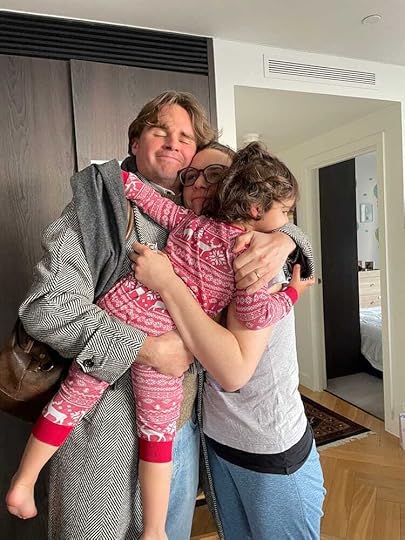
Yesterday we drove from Paris to the Perche. The sun was again shining and all along the road were splashes of bright yellow forsythia and broom in bloom. Once we arrived, the scent of plum blossom floated on the air.
 A natural delicacy
A natural delicacyStill, the picture that sticks most forcefully in my mind of the past weeks is the one of this young person, my grand-daughter...
 Pensive
Pensive...appearing to reflect on the birthday now past and what's possibly ahead. She is standing on a wobbly cushion and the sky outside is, let's face it, grey.
You can visit my website here and follow me on Instagram here
March 2, 2024
Timeline

Friday, 1st March
Every morning, no matter how busy, I take a moment to scroll through Le Parisien newspaper in my inbox. A treasure trove of information about city life, it rarely disappoints and has inspired many a blog.
Wednesday I learned about an exhibition of objets trouvés, a lost and found of stuff that has been dredged out of the Seine over the millennia, at the Archaeological Crypt Museum, under the paved square in front of Notre Dame. I’d never visited the crypt and the exhibition seemed to offer a mix of mystery and history that would appeal to me.
Down the stairs and under the vast forecourt of the cathedral, you enter the very beginnings of stone-constructed Paris, unearthed in the 1960s when the city unpaved paradise to dig a parking lot.
 Land-grabbing cars impatiently await construction
Land-grabbing cars impatiently await constructionTwo thousand years are crammed into a very small area.
 Safe space
Safe spaceThere’s a bit of the port when the city was still called Lutèce, plus traces of Gallo-Roman baths. From the 4th century are remains of the city's fortress wall, and from the Middle Ages an entrance to the first iteration of the Hôtel Dieu, the oldest Paris hospital, before it was re-built and expanded on today's ground level and where it still stands awaiting renovation today.
 Early intensive care unit?
Early intensive care unit?There are bits of the 18th century orphanage, the Hospice des Enfants Trouvés, as well as traces of the 19th century Haussmannien sewage system. Over the centuries, stones were recycled for reconstruction (take note, modern builders, of these ecological practices avant la lettre).
Between the penumbra and the barriers, however, you can’t see the ruins very well and only ascertain the layout from reading the information panels.
As for the objects fished out of the Seine, I liked learning that the Neanderthals had preceded us and left some of their utensils to prove it…
 Cutting edge Neanderthal kitchenware
Cutting edge Neanderthal kitchenwareSeeing some rusted World War I helmets and swords evoked a tiny frisson, but the exhibition was timid and lazy (as the Parisien article, which I only finished upon my return because I was indeed in a hurry that morning, points out). Maybe they didn't need to display the remains of a body retrieved from the river (60 suicides a year), but where, for example, were the Vélib bicycles, the scooters and motorcycles, the bits of gating and other miscellanea of our times that I regularly see dredged out of the Seine?
 Don't forget about us!
Don't forget about us!Or, along with some of the ancient coins, why wasn't there a selection of what must by now be zillions of love lock keys that have been tossed off bridges over the last decade?
Back on today's ground level, I was reminded that the main attraction here is Notre Dame, that it had been a while since I had checked up on her renovation up-close.
 Dazzling in March 2023
Dazzling in March 2023Certainly not since her new spire was deployed in December.
 Getting by with a little help from my friends
Getting by with a little help from my friendsWhen fire struck Notre Dame on 19 April 2019, I was among the truly shaken. She is the heart of my city and the heart was broken. The other day I was moved to tears all over again. Being in her presence is not unlike standing in the shade of a majestic tree. She absorbs history the way an old oak does carbon. And like a tree, she emits a vibe, a beauty that touches an inner chord and bestows the viewer with a breath of aesthetic oxygen.
On this grey morning she seemed almost embarrassed by, apologetic for her reduced state, as if she were doing her level best to remain stoic in the midst of much fuss over her aged, wounded self.
 Is this really necessary?
Is this really necessary?Yet the fuss touched me too. The scaffolding is a work of art.

The soaring cranes state of the art engineering.
 Modern elegance
Modern eleganceThat France still has artisans highly skilled in old ways and that these masters are inside hammering and chiselling and sawing are reasons for hope.
 Teamwork
TeamworkMy hour's travel through Paris' past - from pre-history flints to twenty-first century mega-machines - was a reminder of how fragile our civilisations are but also how one leads to and sometimes co-exists with another. I'm not sure where to place our ailing Notre Dame on this timeline, but it was worth attending that exhibition after all.
You can visit my website here and follow me on Instagram here
February 17, 2024
Broken Geometry
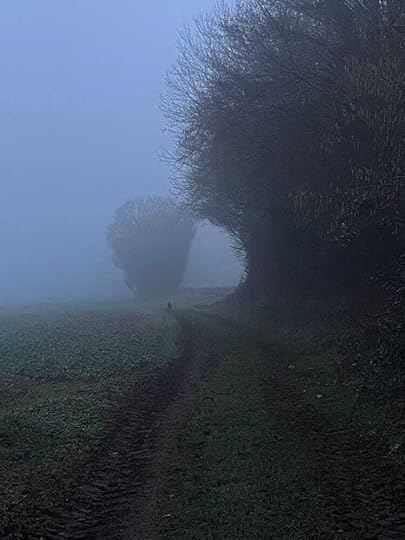
Friday, 16 February
Any regular reader of this publication or anyone who follows me on Instagram will have seen variations of the above photo, the perfect triangle of my morning dog walk with Tasha in the Perche. Even in February, its geometry evokes peace and harmony, a fleeting glimpse of the sublime.
At the end of last week, we drove out from Paris and as we came over the rise on the lane that leads to the house, instead of this stretching before us…
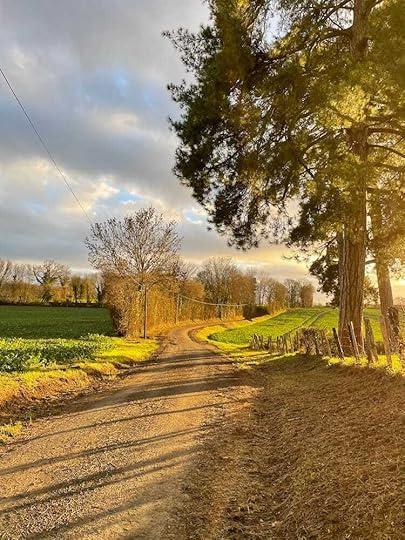
…we saw this…

…and instead of this…
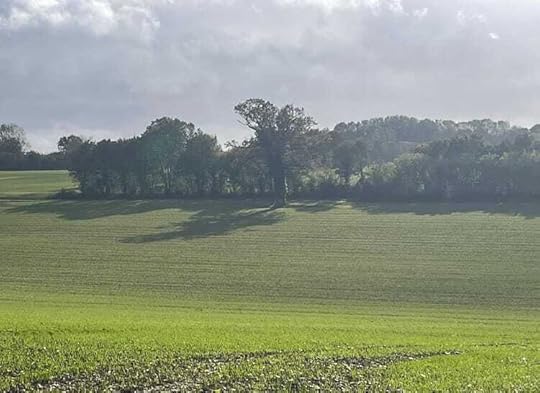
…this…

The machine was still at it…

...and had not finished the next morning...
 What should we do now?
What should we do now?Beyond this red monster, what had been a grassy path was now a muddy, rutted mess of tank-tread tracks and broken branches. The perfect triangle lay in a deconstructed heap to the side.
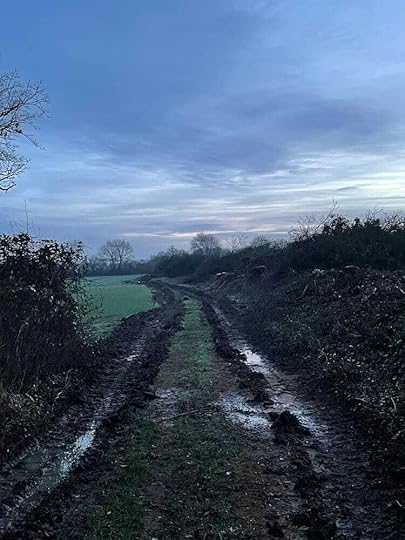
The farmer had performed une coupe à blanc, a clearcut, whereby the trees and bushes are indiscriminately hewn close to the base, in this case along a stretch of lane and footpath totalling about 300 metres/yards.
 Oops - missed a bit
Oops - missed a bitHedgerows are a defining feature of the Perche. They are the stitching in its bocage, the patchwork landscape of farm- and woodland dotted with ponds and etched with streams. Until the 1960s, they were also part of the farming business. Trees were trimmed regularly by la trogne, a method whereby the top branches are cut to the trunk. The wood was used for fuel or, in the case of ash or willow, to feed the cattle.
 Vestiges
VestigesPeople often got from place to place via chemins creux, sunken footpaths between two rows of hedge.
 Survivor
SurvivorThe industrialisation of agriculture in the 60s brought destruction on a massive scale. In the new mechanised economics of farming, hedgerows were now considered a nuisance that limited the size of fields and the the ability to manoeuvre large vehicles. The authorities didn't help: farmers got reduced subsidies for land that fell in the hedgerow's shadow.
The pendulum began to swing back in the 1990s, when environmentalists pointed out their value (see below). Today coupes à blancs are permitted but uprooting (if discovered) is fined. A new national 100m€ scheme offers aid for replanting hedges, even if 20,000 kms/12,425 m (out of a total 750,000 kms/466,000 m) are still destroyed per year (only a fifth by farmers, it should be noted).
But the unsuspecting hedgerows continue to be divisive. One of the reasons given by the farmers for blockading the country a few weeks ago was overregulation. They homed in on the 14 different rules at the EU, national and communal level that govern the treatment of hedgerows. The new Prime Minister Yvan Attal has promised simplification.
 Frosty times
Frosty timesI have written about my love of trees, about the fact that I consider certain individuals friends. No surprise then at my distress over the farmer's Reduction Act. It kept me awake the night of our arrival and had me in tears during the first post-trauma morning walk. Every day since I have left the house with a heavy step, knowing the desecration will pain and unnerve me all over again.
 Broken heart
Broken heartIn an attempt to get a grip, I consulted my inner devil's advocate (IDA):
IDA: You're just being an urban Romantic who expects a pretty vista everywhere you look. No, I'm not, argued my inner God's advocate (IGA). Hedgerows are also extremely functional (see below). I am being a realist, looking at the bigger picture.
IDA: Think of all the horror in the world, where entire countries are being destroyed, where people are dying from war and starvation. These are just a few stupid trees. Yes, IGA countered, but what is happening here is a microcosm of how we are massacring our planet, an example, albeit tiny, of our lack of respect for the hand that feeds us.
IDA: Think of all the hedgerows you never knew - you don't miss them - you'll get used to the stumps. But, IGA shouted back, past mistakes are no excuse for current ones. Do we human beings never learn anything?
IDA: Farmers have been cutting hedges forever; they will grow back. It was different, answered IGA patiently, in the old days. Shorter stretches (50 metres/yards, say) were cut more often and less indiscriminately. Bigger trees were trognés, not buzz-sawed at the base. Whatever foliage does return will not do so significantly in my lifetime and certainly not in the lifespan of all the birds and insects who have just lost their home.
 Support system, no more
Support system, no moreThe bottom line in this debate is that hedgerows are important members of our community and actually offer something for everyone, farmers and tree huggers alike. They:
inhibit erosion (farmers)protect crops from wind (farmers)retain water that helps during droughts (farmers)shelter and provide homes for innumerable insects and birds that eat crop pests (farmers) and promote biodiversity (tree huggers)filter water and regulate its distribution into the earth and water tables (farmers and tree huggers)maintain landscape diversity (tree huggers)stock carbon (the entire planet)In the spirit of keeping dialogue open, of continuing efforts to understand the other side, we invited Monsieur C, the farmer, to coffee yesterday morning. We had already met him and Madame C, when we invited them for coffee last summer. Just because he brutalises hedgerows and sprays his crops wantonly with pesticides and herbicides...
 Glyphosates in action
Glyphosates in action...doesn't mean he is an ogre. He is in fact a pleasant, modest man with a warm smile.
It started, he said, with the order to cut hedgerows on the lane at least a metre below the phone cables that will soon be providing us with fibre optic service. Once he'd hired the machine and the labour, he said, it made sense to keep going and sell the wood to make the pellets that are replacing oil in many of the new furnaces and the wood chips that now blanket everyone's gardens. You can't believe how much time we spend every year respecting all those hedgerow regulations and with no monetary return whatsoever.
Did this personal meeting and explanation change my mind, make me feel better? After all, the man is just trying to make a living. And we're the ones who have been waiting eagerly for the fibre optic to improve our slow, spotty service; we are wanton users of wood chips in our garden.
No, it just reinforced my belief that there are too many of us with too many diverging interests, vying for too little, with reconciliation nowhere in sight.
Before he left, Mr C announced his Reduction Act will resume in September, in part right here (also along my morning walk)...
 Objection overruled
Objection overruledGeometry, one of the oldest branches of mathematics, comes from the Greek and means "to measure the land". According to Dr Wikipedia, it "began as the art of surveying land so that it could be shared fairly between people."
My perfect triangle is not the only thing broken.
You can visit my website here and follow me on Instagram here
January 27, 2024
Islet of Heat
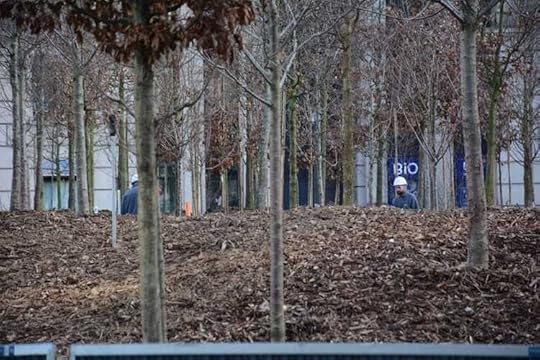
Friday, 26 January
The French love their grands projets, and there are quite a few of them in Paris at the moment as the city frenetically dolls herself up for the Olympic Games this summer and beyond.
 Applying make-up
Applying make-upThere is the ongoing reconstruction of Notre Dame after the devastating 2019 fire.
 Re-spiring
Re-spiringAnd work on the Madeleine Church, as well as the Grand Palais.
 Liberté, s'il vous plaît !
Liberté, s'il vous plaît !
There is also a lot of revamping of public spaces. A large swathe of the place de la Concorde, for example, has been turned into a basketball court and BMX freestyle park.
 "Can I play?" asked the very tall obelisk
"Can I play?" asked the very tall obeliskAnd some of the 170,000 trees promised by Mayor Anne Hidalgo at the beginning of her mandate are finally being planted. Since I have witnessed more trees coming down...
 Stump speech
Stump speech...than going up, the other day I went to see one of the new 'urban forests' in the making.
The place de Catalogne, a square behind the Montparnasse train station and tower, was created in the early 1980s and named after the Barcelona architect Ricardo Bofill who designed the outsized neo-Classical buildings on one side of it.
It is also, as a large sign informs the visitor, ‘un îlot de chaleur' (an islet of heat) thanks to the density of concrete and asphalt. Planting 4000 square metres/43,055 square feet with 470 trees and 16,000 perennials such as ferns and ivy is supposed to offset some of our man-made mess. But by how many degrees? This huddled mass of imported plant life will have to work very hard to make a difference.
 Competing interests
Competing interestsI remember visiting the square shortly after its construction. It shocked me then and shocked me again last week, made me wonder if I hadn't landed back in Berlin among the Soviet façades of the Karl-Marx Allee. Both front (above) and back...
 All that glitters...
All that glitters...Warm and welcoming it is not, but of course neither is the Montparnasse tower that overshadows it, both literally and metaphorically.
 Eclipsed
EclipsedPlaisance, as the quartier is called, has always been an outlier, even before the train lines hemmed it in.

Named after a local farm, the area originally belonged to the Sainte Geneviève Abbey, the buildings of which were kilometres away (its tower still stands, part of the lycée Henri IV, next to the Panthéon).
Where not pockmarked by stone quarries, the land was used for farming and hunting, until things livened up at the beginning of the 19th century. The northern part, where the place de Catalagne stands today, sprouted guingettes (dance hall eateries), cabarets and restaurants because there was no tax on wine outside what was then beyond the city limits.
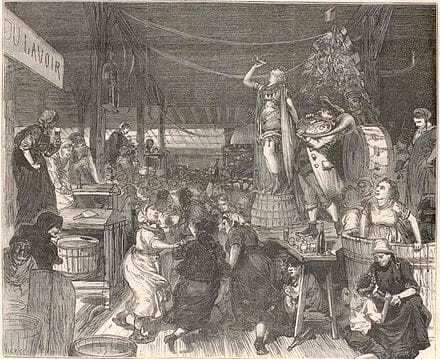 Song and dance
Song and danceIn 1860, Plaisance became part of Paris. Baron Haussmann snubbed it in his massive urban reconfiguration. André Chauvelot, however,…
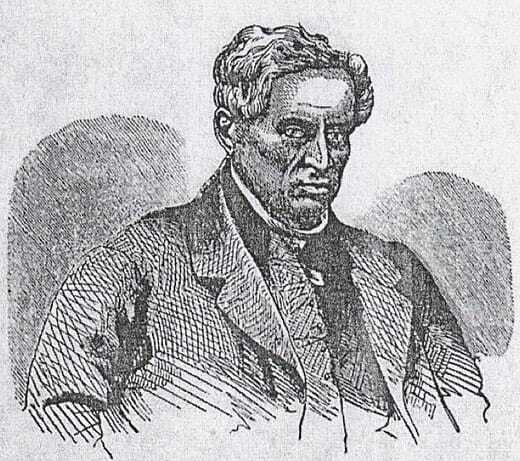 I will make you an offer you can't refuse
I will make you an offer you can't refuse…made a fortune gobbling up and developing land there (to his credit, he also ran a soup kitchen and tried to develop community activities). But building was haphazard and of poor quality, the population impoverished. By the 1940s, the area behind Montparnasse was classified as 'un îlot insalubre' (an unhealthy islet)...
 Good-bye to all that (photo by Jean-François Gornet)
Good-bye to all that (photo by Jean-François Gornet)...and torn down in the 1970s to make way for the place Catalogne and other post-modern constructions.
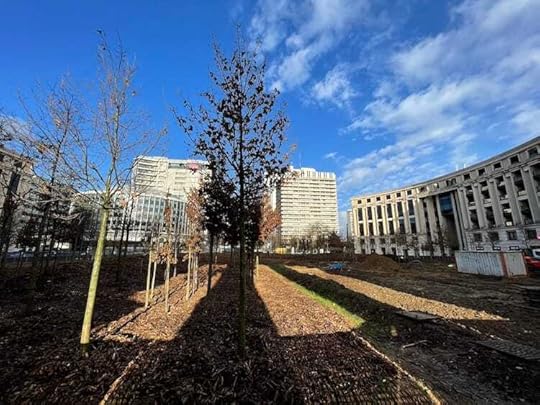
It felt eerie, almost echoing, the day I visited, as if the soul of the place had been bulldozed over and hauled away with the bricks and mortar of its previous life. The presence of the trees didn't help – in fact, I felt sorry for them, fenced in and surrounded by an inhospitable environment. Temperatures may soar in the summer, but I can't imagine much human heat being emitted from the buildings at any time of the year.
 Solo break-dancer in need of a
guingette
Solo break-dancer in need of a
guingette
Behind this mournful scene stands a church. I gravitated towards it as a vestige spared the wrecking ball and because houses of worship often soothe and move me, even if I am not religious. But wow, I wasn't expecting, had never seen anything as spectacular as this:
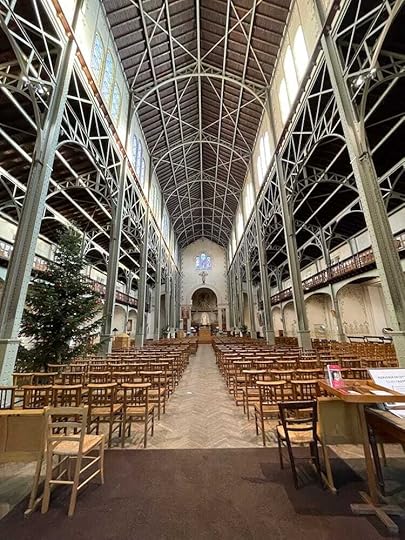
Instead of stone pillars and pointed vaults, there was a supporting structure that looked borrowed from the Montparnasse train station on the other side of the square. Notre Dame-du-Travail, I learned, was built between 1897-1902 for the many labourers living in the area and working on the 1900 World's Fair. The architect Jules-Godefroy Astruc was indeed inspired by a train station, the Gare d'Orsay, and the recently finished Eiffel Tower. He thought the workers would feel more at home in a building resembling their workplace, where the touch of the metal would feel familiar. Put another way, Astruc wanted to create an islet of (human) heat for its patrons.
It was the perfect counterpoint to the chill of the place de Catalogne. Here's wishing those trees well.
You can visit my website here and follow me on Instagram here
January 13, 2024
Season's Greetings

Friday, 12 January
Winter surprised us this week. On Tuesday, when I opened the door onto the dark morning to walk the dog, snow that had not been forecast blanketed the landscape. Better yet it stuck long enough to stick in the memory, and yesterday there were still patches of white to cheer the eye.
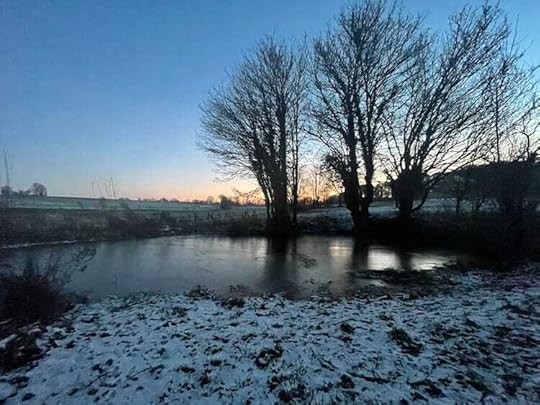
Finally some 'seasonal' weather. With 2023 being the hottest year on record, this January in France is the first month in the last 24 that temperatures have not been above ‘average’. Whatever 'seasonal' and 'average' now mean. Any snow we’ve seen in the recent past has disappeared before it has finished falling.
I'd almost forgotten how wondrous it is, snow. The way it creates a hush all around, except for the crunching sound under your boots...or paws...
 Keeping track of Tasha
Keeping track of Tasha...the way it gives a sense (however misleading) that the world is at peace.
 Om-m-m
Om-m-mIt is accompanied by frozen ground, meaning that you are no longer sloshing through puddles and mud, as we have been for the last few months. Though no complaints from me on that front. Thirsty water tables have been gulping down the rains, and any flooding we experienced here in the Perche, unlike in other parts of France, has been short-lived and limited to some fields...and our lane...
 A river runs through it
A river runs through itA good freeze, too, means that some of the too many insect larvae, who, after all the warm weather, are already rubbing their hungry little caterpillar legs in anticipation of devouring the leaves of our plants and trees again this summer, may be euthanised, as is supposed to happen in winter...
 Yum!
Yum!Another advantage of snowy, cold days is that the dog comes home clean from her walk…
 I hear you; I'm coming
I hear you; I'm coming…when she comes back. Besides acting as a stimulant, snow seems to amplify the call of the wild to the irresistible pitch of a siren's song. After a long period of relative obedience, the Indefatigable One has lit out for the territory three times this week during our morning walks.
And often with cold weather comes the sun, of which we have seen precious little since I can’t even remember when.
 True blue
True blueWelcome clarity and calm after a whirlwind end to 2023, with last-minute trips to Northern Ireland where the sun doesn't shine (or rarely, and never for long) in winter...
 Swinging in Bangor
Swinging in Bangor...Berlin, which was just as dark, and Arles, where the sky may have been clear but the Mistral muddled the mind...
 Blowing in the wind
Blowing in the windTravel conditions meant blogs did not get written, especially as all along the way I have been working intensively on the final revisions to a novel that will be published later this year (more on that soon!).
This morning the snow is gone, thick clouds are back and it's a mournful day. The week ahead offers little encouragement, except seasonal temperatures.
But hey, it's a new year, and despite the messy, mad world out there, I send you best wishes and a sliver of hope for 2024.
 Let there be light
Let there be lightYou can visit my website here and follow me on Instagram here
November 18, 2023
New Places, Small Spaces
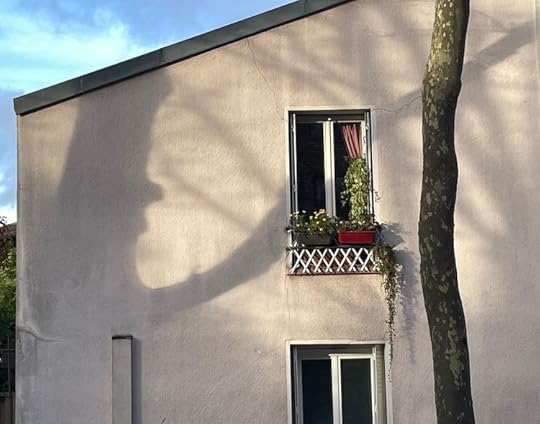
Friday, 17 November
The sun came out a bit on Wednesday, and I decided to carpe diem, to act on a recent article in Le Parisien newspaper about “deux petits paradis aux allures de village” that I had never even heard of: la Butte Bergeyre and la Mouzaïa. Getting to the first, my phone informed me, would only take 29 minutes by bicycle.

Paris, intramuros, is a tiny city. Ringed by the périphérique, it is 9.5 kms/6 miles north to south and 11 kms/7 miles from east to west. The surface area is 104 square kms/40 square miles. Compared, for example, to London’s, which is 1554 square km/600 square miles. Here is a map that nestles the entire city of Paris into the lap of central London.
 A Jewel in the Crown (image created by John Elledge)
A Jewel in the Crown (image created by John Elledge)But Paris is also the densest city in Europe. Look at the Paris-Berlin ratio:
 Lots of green people
Lots of green peopleThe little lady thus packs a punch well above her size. You can travel the 6.3 kms/3.9 miles from home to la Butte Bergeyre, then the 2.6 kms/1.6 miles to the quartier de Mouzaïa (10 more minutes), and be transported to a different world, one unfrequented by the 44 million tourists who have visited the city in the last year and who are still overunning my quartier, even in this dark, rainy month.
According to the article in Le Parisien, while Paris property prices are generally falling, the wee houses in these two 19th arrondissement neighbourhoods on either side of the Parc des Buttes-Chaumont are stable or rising.
 Worth the climb
Worth the climbBut who wouldn't want to live in a woolly-lamb of a house like this on the Butte Bergeyre...
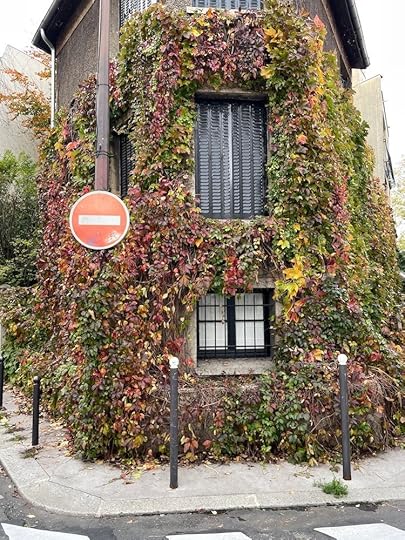
...with a communal garden and vineyards and a view like this...
 From on
butte
to another
From on
butte
to anotherThe history of these buttes (little hills), however, did not presage quaint village living in the capital. They were gypsum and limestone outcrops on which little vegetation grew. From the Middle Ages to 1760, the Buttes-Chaumont served mainly as an execution site for the Ancien Régime. The gibet of Montfaucon was the largest gallows in the country.
 "Aaah!" screamed the stoat at the dangling bodies
"Aaah!" screamed the stoat at the dangling bodiesFollowing the Revolution, it became a rubbish heap and repository for carcasses of horses and other animals. If the the wind was blowing the wrong way, the stench could permeate Paris.
 Just the spot for a dead horse (photo by Henri Le Secq)
Just the spot for a dead horse (photo by Henri Le Secq)Mid-19th century, enter Baron Haussmann (you really can't get away from the guy in this city). To satisfy Napoléon III's desire for a park à l'anglaise, he proposed to transform the smelly heap into an urban Eden. Heaven and lots of earth was thus moved to create the 25 hectare/62 acre public garden.
 Overview today
Overview todayThe two neighbourhoods I visited at either edge of the park had mostly served as quarries to excavate stone not just for buildings in Paris but also, oddly, in the US (the administrative name for the Mouzaïa area is actually le quartier d'Amérique). When the supply was exhausted by the end of the 19th century, low, modest houses were constructed in both places because of the fragile, unstable stone underneath. The Butte Bergeyre, after a short period as a rugby stadium (Robert Begeyre was a rugby star killed in the first world war), became a little hilltop village in about 1925; la Mouzaïa (a most un-woke appellation recalling a colonial victory in Algeria), a warren of "villas" or narrow lanes with gated, gingerbread houses, was built between 1880-1920.
 Shoulder-to-shoulder
Shoulder-to-shoulderWalking around both areas was completely dépaysant, like visiting another country. In fact, la Mouzaïa, in places, almost felt like Berlin. The buildings with funky façades that would never be tolerated in uppity central Paris...
 The Wild Side
The Wild Side...or, just beyond the cute villas, modern towers that could compete with the best of East Berlin's Plattenbauten...
 Where am I?
Where am I?The streets even had the same East Berlin hush.
On the way home, it occurred to me that after over 40 years of living here, Paris can still surprise me.
 New perspective
New perspectiveBack down in the frenetic gnarl of the city, riding along the Seine as the sun was setting, I braked dead in my tracks. Even the monumental side of the city appeared to me in a fresh light. Lucky me, I thought, with so much beauty and variety, just a bike ride away. Who can blame the tourists?
 Soft centre (Tribunal de Commerce and the Conciergerie)
Soft centre (Tribunal de Commerce and the Conciergerie)_____________
You can visit my website here and follow me on Instagram here
November 4, 2023
Inside Out
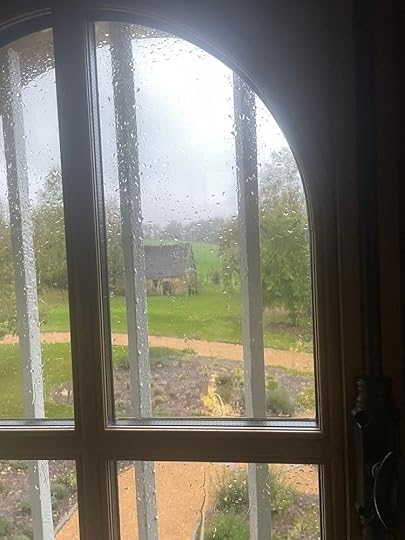
Friday, 3 November
It’s gilet jaune season again – not the human type where the discontented French take to the streets – but the canine version when a dog needs yellow-vest visibility in the face of possible stray bullets.
The hunting season in France lasts about five months, from the beginning of September to the end of February, a long time for those of us not predatorily inclined. Although Sunday is the biggest day for shooting, you need to be vigilant every day of the week, especially when from a distance, your errant, fleet-pawed pet could easily be mistaken for a deer. Preparing for the early morning walk is like tacking up a horse: first the gilet jaune, then the harness. It has occurred to me that a bridle would not be a misplaced addition to The Indefatigable One’s (aka Tasha) gear.
 Out of the starting gate
Out of the starting gateOur friend and green guru Claire complained the other day about the guns going off in the wood next to their house all Sunday long, but we are lucky down here at the end of the lane. Most of our neighbours don’t shoot, and the danger for Tasha lies mostly beyond the perimeter of our walk (ie, if she scampers away on a hunting expedition of her own).
The season also evokes mornings that are dark and cold and perfectly still, bright falling leaves and hearth fires. But increasingly autumn means over-warm days that keep the leaves green and clinging to the trees or vicious storms like the one we had yesterday. Wind and rain lashed the land all night and most of the next day. Our thick stone walls felt solid, but unable to sleep with all that noise, I imagined the car being lifted from the ground and hurled into the house. Again we were lucky. Chez nous, Storm Ciaràn, classified by scientists as a "bomb cyclone", only broke some branches. Our electricity didn't even flicker.
My best pals from college, Megan and Tala, were visiting this past week. It was as comforting and entertaining as an episode of Friends, a show that has been on my mind with Matthew Perry's untimely death the day they arrived.
 Complicity
ComplicityTala lives in Paris, but I hadn’t seen Megan or her husband Ned who live in Maine since before Covid, and they hadn’t seen Deux Champs since before its renovation. Megan said: “Every view through every window is like a painting.”
All the credit for this compliment goes to Monsieur et Madame Jaussaud and Claire, the inside and outside architects, but I know what Megan meant. I often photograph the windows and the glorious landscapes they frame.
 Tunnel vision
Tunnel vision  Best view in the house
Best view in the houseDuring our three days together, we of course talked a lot about the miserable state of the world. The war in Ukraine that has been shoved off the front page and possibly out of the US budget by the horrors now taking place in the Middle East. Because my husband David works to support national parks in the Caucasus, we talked too about the recent ousting of Armenians from Nagorno-Karabakh and how Azerbaijan, supported by Turkey, may take advantage of attention turned elsewhere to seize more territory. David said: “The country of Armenia may not even exist in a few years.”
 One small tree
One small treeMaybe I take the inside-out photos to frame the picturesque, but it's also, I think, to highlight the perceived safety of being inside, of being protected from whatever's out there. Like the 500-year old walls shielding us from the storm or Tasha's gilet jaune from the hunters. But shelter seems more and more of an illusion, or at least a fading premise.
Our friend Amanda came over to supper last night. The storm did blow out her electricity, so she recharged her various batteries, got warm near the fire. Over dinner, we of course talked about the miserable state of the world.
"We've been safe in the Perche," she said. "But it's not going to last."
Don't we all feel it? That the hatred and violence playing out elsewhere are closing in, coming closer and closer to home, no matter where we live?
 Dying light
Dying lightAs I finish this blog entry Saturday morning, rain is again needling the windows and more strong winds are on the way. But Tasha still needs a walk, so I'll saddle her up and head outside into the storm.
_____________
You can visit my website here and follow me on Instagram here
October 21, 2023
Shape Shifting
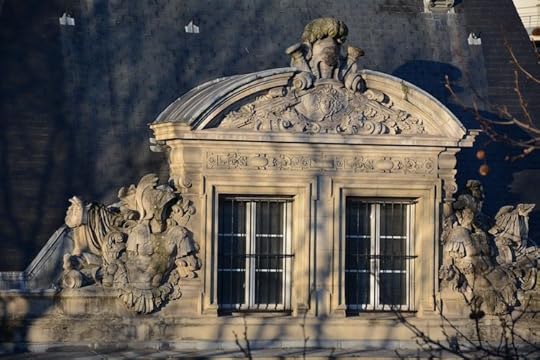
Friday, 20 October
Our local bookshop closed this week. The Labo Land photo developer next door to it and the Café Mucha next to it will soon follow suit. The block of buildings has been bought by a developer who has revoked their leases. Their disappearance marks a significant advance in the march towards the hollowing out of life in our 7th arrondissement Paris neighbourhood.
 "What is happening to my 'hood?" asked a concerned citizen
"What is happening to my 'hood?" asked a concerned citizenThe turning point for me was 2015, when the Ministère de la Défense right across the street from our apartment (and across the square, to the right of the now empty book shop Albin Michel in the above photo) moved to a new compound in Balard, at the edge of the city.
The vast expanse, known as the Îlot Saint Germain, "shaped the quartier". Its façade on the boulevard Saint Germain is longer than a football pitch. The building then continues around the corner onto the rue de l’Université on one side...

...and back to the rue Saint Dominique on the other, all the way to the rue de Bourgogne.

Once upon a time, this hive was thriving. When I returned from my morning dog walk at 8.30, hundreds of workers were entering the building. At lunch, they emerged, buying sandwiches at the bakery or using their tickets restaurants (lunch vouchers that are part of many French pay packages) at the local cafés. 5.30pm on the dot, out they flowed for home.
In the course of the day, small groups of militaires jogged together, chatting chirpily in their skimpy shorts on the way across the river to the Tuileries gardens. Traffic was stopped on the boulevard St Germain to allow visiting contingents to drive through the gate with fanfare. We used to blame spotty mobile phone reception on their "systems" and complain about the motorcycles they parked in front of our door, but when they were gone, what a forlorn hole the great, empty hive left.
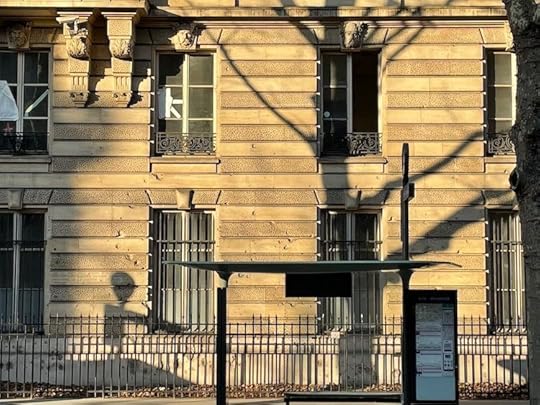
As is so often the case, the Îlot’s history began with religion. In 1640, when the area was still largely farmland and swamp, the convent les Filles du Saint Joseph set up shop with a mission to take in poor orphans and teach them Christian values and embroidery. When Madame de Montespan was pushed aside by Madame de Maintenon as Louis XIV’s mistress and confidante, she built un hôtel particulier (big house) on the property and "retired" to it, thus increasing the convent’s prestige among the growing number of nobles who were moving here from the Marais.
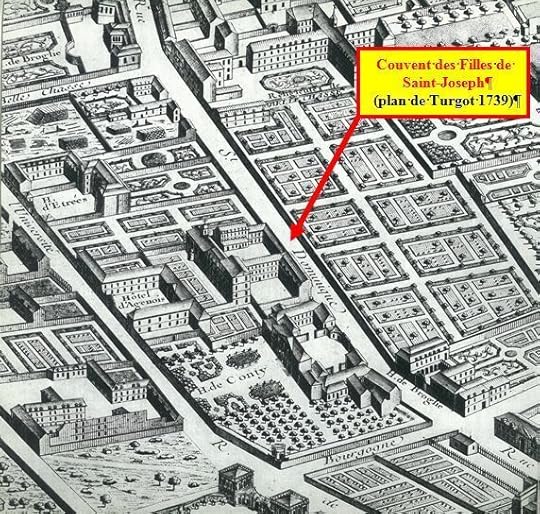
Along came the Revolution. Nuns and nobles were evicted (or worse), and the religious institution was converted to the Ministry of War. For a while, Napoleon’s brother (until they fell out and Lucien fled to Italy), then mother, lived in the hôtels particuliers on the premises, but those too were eventually handed over to the army. New buildings, plus a double-faced clock tower, were built when Baron Haussmann bulldozed the boulevard in his remaking of the city…
 The good old days
The good old days...and modern blocks got plonked in the middle of the enclosure during the 20th century...
 Between church and state
Between church and state...and German Big Bertha howitzers damaged the façade at the end of the World War I...
 Pock marked
Pock marked...but the Îlot endured.
When the Ministry moved out eight years ago, speculation about the compound's fate was rife. The elite school Sciences Po was buying it, some said. The whole thing will be turned into social housing, said others. No, it'll be a(nother) fancy hotel, said still others.
In the end, the property has been divided in three. The hôtels particuliers still belong to the armed forces. Another part was sold to the city of Paris and their conversion into to social housing, a gym and a child-care facility is almost complete. The third part, as a letter from our arrondissement mayor Rachida Dati confirmed last month, has been bought by Constellation Hotels (owned by the Qatar Investment Authority) and will be turned into “a palace [luxury hotel], spa, car park, private apartments and several restaurants.” An odd juxtaposition with the subsidised rental units, but such is our crowded world.
She invited us to a meeting last Monday, which I attended.
 Face to face
Face to faceAs you can see, Tasha and I are not the only concerned citizens.
The mayor gave us her spin about preserving "the quality of life in our arrondissement". The construction company gave us their spin on sophisticated methods for tempering the noise and tamping down the dust, but the rue Saint Dominique residents particularly were not convinced.
 And this is just the beginning
And this is just the beginningThe works, they said, are already making their walls quiver. But breaking two-metre thick bunker walls is bound to disturb the peace.
Most of the questions regarded personal inconveniences during the works and, once it is done, the noise level at night emanating from the café-restaurant and infinity pool on the roof. Someone asked about the plane trees on the boulevard Saint Germain and how they would survive the trauma.
Only one person addressed the fundamental question: Why this luxury complex in the first place? The mayor's Cabinet Director (Madame Dati was long gone) answered that with the Hôtel Lutetia having been somehow demoted, "the Left Bank does not have a palace hotel".
Which begs other questions, such as why does the Left Bank need a palace hotel? And once we have our very own palace hotel, how will it contribute in any way to our "quality of life"? Its presence will mean even fewer practical shops for us residents.
Listening, I could not keep the broader context in which this Xanadu is being built out of my mind. The Ministère de la Guerre may be gone but wars themselves are proliferating. The world gets scarier by the day, and enumerating the perks for this shape-shifting project that will not be finished for at least five years seemed in bad taste, even fate-tempting. But the Qataris, I guess, have money to spend; they already own innumerable hotels in the city.
The Îlot Saint Germain has been the backdrop to our life for 25 years. It's hard to be happy about its new countenance.
 Barricaded
Barricaded_____________
You can visit my website here and follow me on Instagram here
October 7, 2023
A Model

Friday, 6 October
Earlier this week, I felt an urge to get away, to be reminded that Paris is more than its currently frantic, disfigured centre. Along with pervasive road and building work that I have written about in previous postings, there’s now the Rugby World Cup Village blighting the place de la Concorde.
 Hey, where's the scrum?
Hey, where's the scrum?This week the fashionistas joined the sports fans for Fashion Week, meaning the Tuileries Gardens, already a work site, are further uglified with tents and the bi-annual Dior cube (three weeks to assemble, two weeks to dismantle, 12 minutes of fashion show).
 Diminishing returns
Diminishing returnsOnce again a small museum provided the antidote, this time not the Fondation Custodia next door but the Musée de Montmartre, a direct Métro ride away.
Just stepping out of the Lamarck-Caulincourt Métro is entering another world. Unlike down here in the flat former swamp that is the 7th arrondissement, Montmartre is criss-crossed with sloping streets and steep staircases. It’s a picture postcard Paris overrun with tourists, but there are enough Parisiens in residence to keep it real.
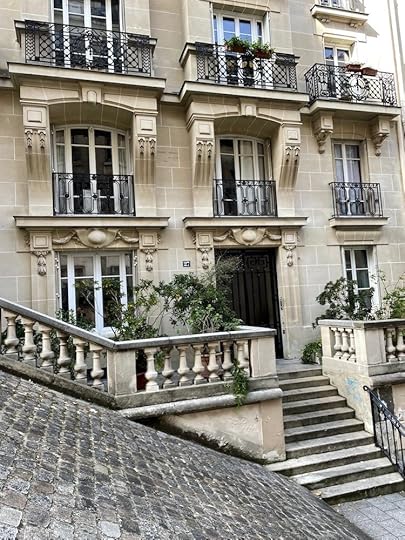
The museum is a complex of renovated old buildings and well-tended gardens that was a scruffier denizen for artists from Degas to Renoir to Picasso, when the quartier was the hub of the Bohemian Paris art world. The artwork isn’t much to write a blog about, but the setting is serene and pleasing and thankfully only attracts a handful of the tourists beyond the gates (top photo).
 Gaining perspective
Gaining perspectiveWhich meant that while wandering the studio and apartment of Suzanne Valadon - by far the main attraction - I had the place to myself. Though the space has been recreated, the artist and the woman came alive to me.
 Room of her own
Room of her ownShe was not a complete stranger. When I was a child, my mother took me to see the Impressionists and Post-Impressionists at The Art Institute of Chicago. We were looking at Montmartre scenes painted by Maurice Utrillo. “His mother was an artist too,” my mother – also an artist – said. “She would give him a wine-soaked cloth to suck on to keep him quiet while she painted. He was an alcoholic for the rest of his life. It was very sad.”
I'm not sure how old I was, but young/old enough for the story to both scare (surely my mother would never do that) and intrigue (there is a whole other world out there) me. The nameless woman stuck firmly in my memory bank.
 Troubled Maurice
Troubled MauriceSuzanne Valadon, I learned yesterday, was that woman. Over the years, I'd seen the odd work by her at this museum or that, but I hadn't realised she was Utrillo's mother. Nor had I known anything about the more affirmative aspects of her intense, wilful life. Nor had I fully appreciated her compelling aesthetic - just look at the strong contours and fine shading in the above drawing of her son.
The fatherless daughter of a laundress, she was born in 1865 and grew up dirt poor in Montmartre. Determined to escape her mother’s fate, she trained as a trapeze artist, but an accident at 15 scotched plans for the circus. Instead Valadon became an artist’s model, posing for, among others, Puvis de Chavannes, Renoir and Toulouse-Lautrec.
 La Danse à Bougival, Pierre-Auguste Renoir
La Danse à Bougival, Pierre-Auguste RenoirIf her mind appears to be elsewhere in the above painting, it's probably because while posing she was observing Renoir's technique, teaching herself to become an artist in her own right. Her former employers became her peers and by 1894, with the help of the usually misogynist Degas, she was the only woman to exhibit at the annual Société Nationale des Beaux Arts. She subsequently participated in several Salons d'Automne and had many solo shows at Paris galleries.
She was just as determined to do as she liked in her love life. There was a turbulent affair with Toulouse-Lautrec. She broke the composer Erik Satie's heart. For a while she was married to a stockbroker, but her son's violent alcoholism led to divorce. Shortly thereafter she married André Utter, an artist friend of son Maurice and 21 years her junior. He became her manager, and the three lived together in the studio-apartment I visited.
 Ménage à quatre and cat
Ménage à quatre and catIn Valadon’s work, you can see the influences of the painters from whom she learned - composition and postures reminiscent of Puvis de Chavannes, the rosy flesh of a Renoir - but her style is her own. She caught people in a moment of time as they stared both fixedly and absently into the distance. Look at her painting La Chambre Bleue…
 Don't stereotype me
Don't stereotype me…where a woman is posed as an odalisque but oversized and dressed in a most un-feminine fashion, with a most un-lady-like fag hanging from her mouth. She was as plucky in her art as she was in her life.
Though she died in poverty, less renowned (unjustly!) than her son, Suzanne Valadon's single-minded, unconventional approach to living is a model to us all.
 Last self-portrait
Last self-portrait_____________
You can visit my website here and follow me on Instagram here
September 23, 2023
Finding the Feng Shui (cont'd)

Friday, 22 September
Mid-August, I got a shocking email. It was from Orange, our telecommunications provider. They are (slowly) installing fibre optic access in our area and needed details on our living arrangements. The message included a satellite photo that must have been taken last summer:
 Gasp!
Gasp!Was it really that bad, our (non-) garden, or was it just the aerial perspective?
 Yes, it was that bad - how quickly we forget
Yes, it was that bad - how quickly we forgetThe ground had been turned, but the delayed arrival of stones for the outside terraces made it too late to plant, and it wasn't until last September that the tiny new residents were installed in their new home.
 Hope for the future
Hope for the futureDuring winter they settled in demurely. Come spring they nudged up and out, but it took our rainy summer for the plants to really feel their legs. The garden grew and grew.
 Summer job
Summer jobWe witnessed not just the growth spurt but also the importance of soil quality. Note in the above photo how the patches closer to the house are lusher. That's because the plants were laid in the really good soil from our organic farmers, while the those top right must make do with a bit of good earth and lots of Perche clay.
The photo from Orange reminded me how last summer I avoided looking out the window, tried to keep my eyes averted when I went outside. Now I can’t get enough of the views, from my window or close-up...
 Illumination
Illumination...at the front...
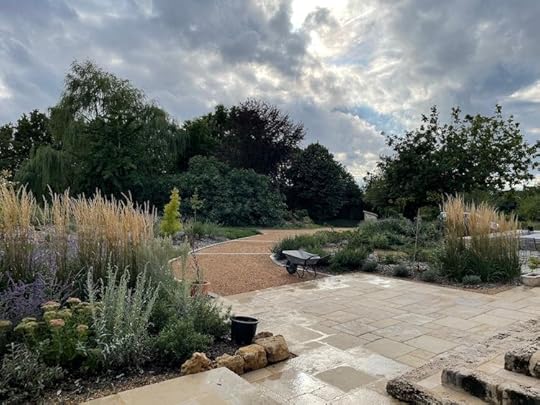
...at the back...
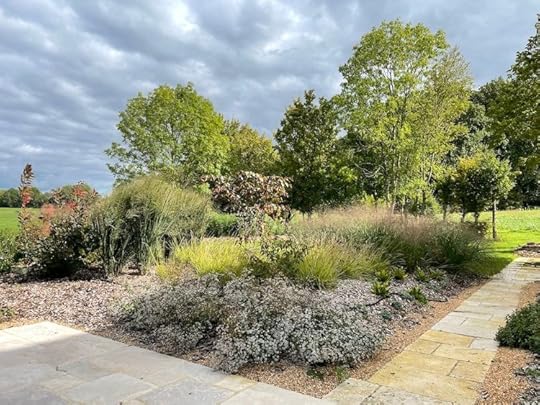
...or at the side...
 (photo by Claire)
(photo by Claire)From whatever angle, the garden now improves your mood; the beauty and balance fill you with peace and calm. Put another way: its feng shui has come along in leaps and bounds - and certainly much more smoothly than it did in the house - thanks to our garden expert Claire and her team.
 Feng Shui Guru-in-Chief
Feng Shui Guru-in-ChiefAlong with all the new planting, we have not lost focus on the past and Deux Champs' long history, even in the garden.
During the renovation of the house, a lot of old stones were pulled out when we broke through walls to insert new windows and doors. Claire had two ideas for their redeployment. The first was to build low walls (like the one she's standing on in the above photo) around the terraces.
The other was to take a selection of the more notable stones and create a path leading from the parking area towards the house. Dipping into her seemingly bottomless well of connections, she had just the person to do it.
Armand, after a career in haute couture, moved to the Perche with his husband Thierry and retrained as a mason, thus transferring his artistic skills from cloth to stone. For two weeks in August, he pieced the path together...
 Stone mosaic
Stone mosaic Tada!
Tada!Even David, who tends to feng-shui denial, had to admit that our Perche version of the yellow brick road is an important addition to the growing harmony at Deux Champs.
 New life for old stones
New life for old stonesThere's more to do (like planting along the right side of the path), but what a difference a year can make.
_____________
You can visit my website here and follow me on Instagram here



